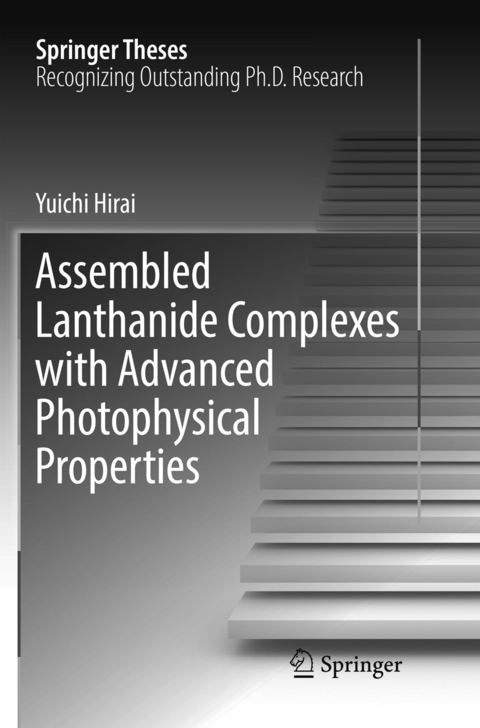
Assembled Lanthanide Complexes with Advanced Photophysical Properties
Seiten
2019
|
Softcover reprint of the original 1st ed. 2018
Springer Verlag, Singapore
978-981-13-4277-6 (ISBN)
Springer Verlag, Singapore
978-981-13-4277-6 (ISBN)
This thesis provides essential information on the systematic design of assembled lanthanide complexes for functional luminescent materials. It discusses the relationships between assembled structures and photo, thermal, and mechanical properties on the basis of crystallography, spectroscopy, and thermodynamics. The described guidelines for assembled structures will be extremely valuable, both for industrial applications and for readers’ fundamental understanding of solid-state photophysics and materials chemistry.
Luminescent lanthanide complexes are promising candidates for lighting devices, lasers, and bio-probes owing to their line-like and long-lived emission arising from characteristic 4f–4f transitions. Low-vibrational and asymmetrical coordination structures around lanthanide ions have been introduced to achieve strong luminescence, using specific organic ligands. Recently, assembled lanthanide complexes including coordination polymers and metal organic frameworks have increasingly attracted attention as a new class of luminescent materials offering thermal stability and color tunability. However, improving the luminescence efficiencies of these compounds remains a challenge, and specific molecular designs to control assembled structures and yield additional physical properties have not been established. The author provides a group of bent-angled bridging ligands to boost photoluminescence efficiency, and successfully introduces for the first time glass formability and strong triboluminescence properties.
Luminescent lanthanide complexes are promising candidates for lighting devices, lasers, and bio-probes owing to their line-like and long-lived emission arising from characteristic 4f–4f transitions. Low-vibrational and asymmetrical coordination structures around lanthanide ions have been introduced to achieve strong luminescence, using specific organic ligands. Recently, assembled lanthanide complexes including coordination polymers and metal organic frameworks have increasingly attracted attention as a new class of luminescent materials offering thermal stability and color tunability. However, improving the luminescence efficiencies of these compounds remains a challenge, and specific molecular designs to control assembled structures and yield additional physical properties have not been established. The author provides a group of bent-angled bridging ligands to boost photoluminescence efficiency, and successfully introduces for the first time glass formability and strong triboluminescence properties.
General introduction.- Luminescent lanthanide coordination polymers with densely-packed structures for high energy transfer efficiency.- Luminescent lanthanide-mixed coordination polymers for tunable temperature-sensitivity.- Construction of luminescent lanthanide coordination glass.- Amorphous formability and temperature-sensitive luminescence of lanthanide coordination glasses.-Triboluminescence of lanthanide coordination polymers.- Summary.
| Erscheinungsdatum | 18.02.2019 |
|---|---|
| Reihe/Serie | Springer Theses |
| Zusatzinfo | XV, 106 p. |
| Verlagsort | Singapore |
| Sprache | englisch |
| Maße | 155 x 235 mm |
| Themenwelt | Naturwissenschaften ► Chemie ► Anorganische Chemie |
| Naturwissenschaften ► Chemie ► Organische Chemie | |
| Technik ► Maschinenbau | |
| ISBN-10 | 981-13-4277-6 / 9811342776 |
| ISBN-13 | 978-981-13-4277-6 / 9789811342776 |
| Zustand | Neuware |
| Haben Sie eine Frage zum Produkt? |
Mehr entdecken
aus dem Bereich
aus dem Bereich
Buch | Hardcover (2024)
Springer Spektrum (Verlag)
CHF 89,95


